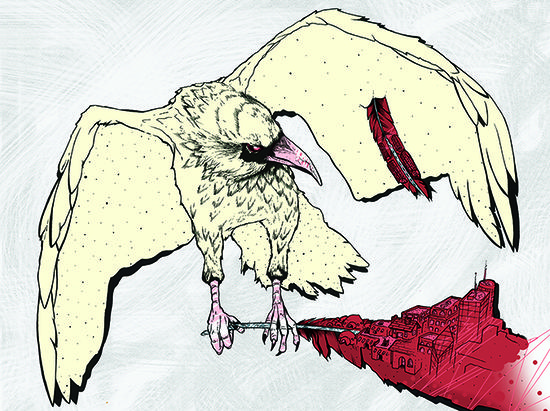SFI Innovation Short Course 2016 - Faculty 2016
From Santa Fe Institute Events Wiki
| Education Event Navigation |
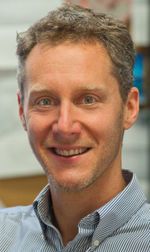
Josh Bongard, Cloud Robotics
What kinds of innovation are possible once large numbers of people, computers, and autonomous machines can interact with each other through the web?
Bio
Associate Professor, Department of Computer Science, University of Vermont
There are two main thrusts in my research group: evolutionary robotics and machine science. In our evolutionary robotics work, our long-term goal is to enable increasingly large numbers of non-experts to direct the evolution of increasingly complex, capable, and autonomous machines to perform a widening array of difficult tasks. This involves work in theoretical biology: what mechanisms from biological evolution must be incorporated into an evolutionary robotics system to increase its evolvability? It involves work in embodied cognition: how does one spread ‘computation’ out across not only the neural controller of the machine, but also its morphology? It involves work in computational neuroscience: what kinds of neural models should be instantiated in our evolving robots? Finally, our work has psychological and philosophical implications: if a robot evolves that exhibits the behavioral manifestations of high-level cognitive competencies such as self-awareness, how can we determine whether a robot actually possesses, rather than just simulates, that competency? In our work on machine science, we attempt to automate as best we can all aspects of the scientific process: hypothesis generation, selection of phenomenon to measure, experimental design, and data collection. (Machine learning, in contrast, only focuses on hypothesis generation.) My overall strategy is to select generally high-risk, high-reward research questions that, if validated, are likely to change our thinking about seemingly obvious approaches, such as focusing only on control, rather than both morphology and control, in robotics
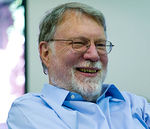
John Seely Brown, Managing radical innovation
John Seely Brown or as he is often called—JSB—is the Independent Co-Chairman of the Deloitte’s Center for the Edge and a visiting scholar and advisor to the Provost at University of Southern California (USC). A master integrator and instigator of productive friction, JSB explores the whitespace between disciplines and builds bridges between disparate organizations and ideas.
Prior to that he was the Chief Scientist of Xerox Corporation and the director of its Palo Alto Research Center (PARC)—a position he held until June 2000. In his more than two decades at PARC, Brown transformed the organization into a truly multidisciplinary research center at the creative edge of applied technology and design, integrating social sciences and arts into the traditional physics and computer science research and expanding the role of corporate research to include topics such as the management of radical innovation, organizational learning, complex adaptive systems, and nano-technologies. He was a cofounder of the Institute for Research on Learning (IRL). His personal research interests include digital youth culture, digital media, and the application of technology to fundamentally rethink the nature of work and institutional architectures in order to enable deep learning across organizational boundaries – in brief, to design for emergence in a constantly changing world.
Ross Buhrdorf, Panelist
Santa Fe Institute Trustee
Ross Buhrdorf began his career in technology with positions at DataGeneral, Tandem Computers and HAL Computers after graduating from University of Texas at Austin with a Bachelor’s degree in computer science. Buhrdorf held the position of VP of Engineering at Excite.com, where he managed a team of two hundred engineers globally. Buhrdorf and his team handled multiple acquisitions and drove the “Communities” area of the site handling traffic of 40 million daily page views, which ultimately aided Excite in becoming the fastest growing company in Silicon Valley in 2000.
Buhrdorf joined HomeAway shortly after its inception to oversee technology, trust and security, hosting, corporate IT, infrastructure and global customer systems. While at HomeAway Buhrdorf has assembled the development and engineering team from five employees to over 200 hundred employees world-wide. Buhrdorf was an integral piece in the integration of multiple technology systems that contribute to the company’s rapid growth. Some of the highlights of Buhrdorf’s career at HomeAway include, leading the company through it’s first Super Bowl ad campaign in February 2010. Buhrdorf and his team fortified HomeAway.com for the sizable traffic surge generated from it’s national ad. His work helped HomeAway to rank second in site traffic generated from a Super Bowl ad and second in site responsiveness and performance.
More recently Buhrdorf was awarded the 2011 CTO of the year award from Austin AIPT. Recipients of this award are recognized for the ability to use technology to better the lives of the communities they serve through leadership, innovation, creativity, impact and process transformation. Being honored by the AIPT is the most distinguished award the Austin IT community has to offer.
Buhrdorf is a life long entrepreneur and angel investor. He has invested in Capital Factory, one of the top incubators for young startups in the country where he mentors young entrepreneurs to success.

Jessica Flack, How digital technology affects human social networks
Santa Fe Institute, Resident Faculty
Flack's research focuses on coarse-graining and collective computation in nature and their role in the evolution and development of new levels of biological and social organization and kinds of individuality. In other words, the origins of biological space-time.
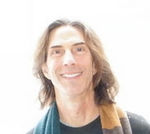
Eric Henderson, DNA Origami
Iowa State University, Professor of Genetics, Development, and Cell Biology
Eric teaches, promotes and practices rule breaking (when appropriate), fearlessness, and entrepreneurship in all facets of life. He has been involved in several companies including: Bio Force Nanosciences, Inc., (biotech); Aspera Corp (biotech); Creodyne, llc (tech development); Bumblefunk Music (media); Hello Holdings (Griffle, GriffleGames, Griffle TV; media); eMoJoCo, llc (art and media)
Eric is always looking for challenges and opportunities to work with young entrepreneurs. On the side Eric is a performing musician, fiction writer, tinkerer, and gadget freak. Henderson's laboratory takes an enormously multidisciplinary approach to the study of the interface between biology and nanotechnology (or, more generally, life and technology). This area of inquiry can be labeled either bionanotechnology or synthetic biology. The label is of no importance. What is important is that 3.6 billion years of biological evolution has resulted a vast library of deeply tested pathways to addressing the dreams of nanotechnology. Their challenge is to understand and, in a practical fashion, transfer these insights to the emerging field of bionanotechnology.
Henderson's research team has developed a complex, multidimensional mechanical system made out of DNA for testing molecular bonds and detecting molecular species. They have also developed enhancements to the process of DNA origami that expand the opportunity space for DNA-based nanosystems substantially. Additional ongoing projects involve “shape-shifting” DNA nanodevices and computational methods for generating the tools required to fully exploit the potential of DNA-based nanosystems.
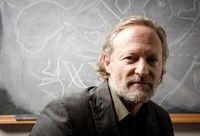
David Krakauer, President of Santa Fe Institute - Welcome & Cultural Evolution
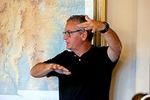
Jose Lobo, Exploring Complexity in Invention: Insights from Studying Patenting
Jose is a Professor of Sustainability at Arizona State University.
Patents granted by the U.S. Patent Office, representing a record of inventive activity spanning over 200 years, have become a widely used (and abused!) data source for studying invention and innovation. Several prominent themes in the investigation of technological change informed by complexity science---invention as both a combinatorial and a search process, innovation as an evolutionary process, technology landscapes, technological change as driven mainly by the accumulation of incremental modifications---can be rendered empirical through the use of patent data. In this lecture I will summarize recent research on technological change informed by a complexity perspective which has used patent data. The lecture will emphasize what patent data can inform us about, the insights gained from bringing a complexity perspective to the study of patenting, and the differences between invention in the biological and the socioeconomic-cultural realms, and the current controversy as to whether teh rate of technological change has slowed down.
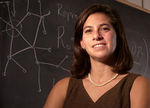
Lauren Ancel Meyers, Innovation in Epidemiology
Santa Fe Institute, Science Board, External Professor
Professor and Director, University of Texas at Austin, Section of Integrative Biology and Institute for Cellular and Molecular Biology
Dr. Meyers received her B.A. degree in Mathematics and Philosophy in 1996 from Harvard University and her Ph.D. in 2000 from the department of Biological Sciences at Stanford University. After completing a postdoctoral fellowship from the National Science Foundation, she joined the faculty of Integrative Biology at the University of Texas at Austin in 2003. Using a combination of mathematical modeling and experiments, Lauren’s research lies at the interface of evolutionary biology and epidemiology. She studies the interplay between disease transmission dynamics and the evolution of pathogens including those responsible for epidemic meningitis, influenza, walking pneumonia, and SARS. Based on this research, the MIT Technology Review recently named Lauren as one of the top 100 global innovators under age 35. Dr. Meyers conducts research in two general areas. The first is mathematical epidemiology. Over the last five years, she has been developing new network-based mathematical approaches for predicting the spread of infectious diseases and collaborating with public health officials in the US and Canada to apply these methods to designing optimal control measures. Her second research area is theoretical evolutionary biology, with a particular focus on (a) the impact of environmental heterogeneity on evolutionary dynamics and (b) the structure of complex fitness landscapes.

Mickey McManus, "Primordial", Ecological Design and the Nature of Things
Description
In his current research project, “Primordial," Mickey McManus and his team are exploring the impact on design when three inevitable technology trends converge. Often called the “Internet of Things,” pervasive computing is a game-changer that's on a collision course with two complementary trends—digital manufacturing and machine learning. In 2012, Mickey co-authored one of the essential field guides to the era of pervasive computing in his book, Trillions. He believes that these three trends, taken together, give us the ability to shift to an entirely new set of design and business paradigms for the first time in our history. The way we design for things, when they begin to wake up, is uncharted territory. If we don’t take into account our connected future and continue to design for disconnected things, we will design our way into irrelevance. The challenge we as designers, engineers, & entrepreneurs, face is how we surf these trends, what we do about them, and how the act of designing "things" will change. Those of us that figure it out sooner rather than later will have an unfair advantage, while others will be reactionary and surprised at each turn of the screw. Mickey and his team hope some of us can not only survive the riptide, but also harness its power for good. Please join Mickey in a discussion about Primordial, ecological design and the nature of things.
Speaker's Bio
Mickey McManus is a research fellow at Autodesk in the Office of the CTO, and Principal & Chairman of the board at MAYA Design, a design consultancy and research lab that spun out of Carnegie Mellon University over two decades ago. He's a pioneer in the fields of pervasive computing, collaborative innovation, human-centered design and education. Mickey holds nine patents in the area of connected products, vehicles and services, and spearheaded the launch of MAYA's Pervasive Computing practice to help companies kick-start innovation around business challenges in a vastly connected world - where computing devices outnumber people.
In 2012, he coauthored the book Trillions: Thriving in the Emerging Information Ecology (Wiley) — a field guide to the future, when computing will be freely accessible in the ambient environment. Trillions was awarded the Axiom Gold Award in 2013 for best business book about technology and the 2013 Carnegie Science Award in the Science Communicator category.
Mickey speaks frequently about pervasive computing, design, and business innovation. He has lectured at Carnegie Mellon University, Illinois Institute of Technology, LUMA Institute, MIT, Princeton, University of Illinois, UC Berkeley, and UCLA. His work has been published in Bloomberg Businessweek, Fortune, Fast Company, Wall Street Journal, and the Harvard Business Review.
{border}
Steen Rasmussen - Major impacts of technology on the evolution of human society
Santa Fe Institute External Professor; Professor, Research Director and Center Leader, University of Southern Denmark, Self Organizing Systems
Born July 7, 1955 in Helsingoer (Elsinore), Denmark. Citizen of Denmark. Permanent Residence in U.S.A. (Alien of Extraordinary Ability). Formal education, PhD Physics. Focused on representing, generating, analyzing, and controling self-organizing and related systemic processes as they are manifested in natural and human-made systems. Current and recent projects include assembly of protocells, web-based decision support systems, simulation of critical infrastructure protection, and the development of simple urban dynamics simulations.

